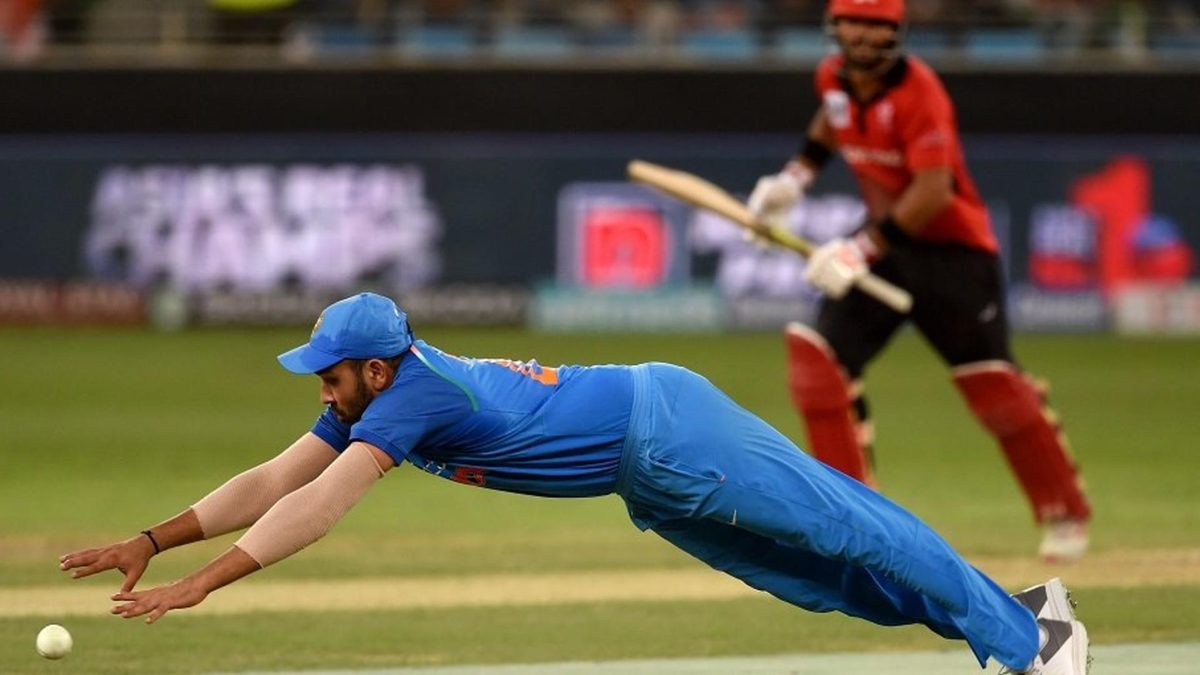
Hong Kong needed 111 in 96 balls to beat India that night, with all 10 wickets in hand. Then they collapsed.
Hong Kong had been thrashed in their first four matches at the Asia Cup, in 2004 and 2008. Their margins of defeat – 116 runs, 173 runs, 155 runs, 256 runs – had been embarrassing. However, over time, a new generation of cricketers emerged to convert them into a competitive side.
Their brilliance first became evident in 2015, when they beat the UAE twice away from home. Over the next two years, they beat Scotland twice and Papua New Guinea four times. And in the 2018 World Cup Qualifier in Zimbabwe, they scaled unprecedented heights when they beat Afghanistan – then an ICC Full Member.
They lost to Malaysia in the 2018 Asia Cup Qualifiers, but hit back to reach the final, beat the UAE, and qualify for the main phase. Even then, few expected them to pull off an upset against India or Pakistan, the two teams they were pitted with in Group A.
The Pakistan match proceeded on expected lines. Hong Kong were bowled out for 116 despite a 53-run sixth-wicket partnership between Kinchit Shah and Aizaz Khan, and Pakistan won inside 24 overs. Then came the India match.
Virat Kohli had opted out of the tournament, but they still had Shikhar Dhawan, who got a comfortable 120-ball 127. At 237-2 after 40 overs, India had probably eyed a total around 340; but led by Kinchit (3-39), the Hong Kong bowlers restricted them to 285-7.
Even then, the target did not seem within Hong Kong’s scope. Until then, they had scored more only twice, while their best effort in a chase had been 213. And despite resting some seniors, India had a reasonable bowling attack. Few, thus, gave Hong Kong a chance when Nizakat Khan and Anshuman Rath strode out.
The first three overs passed by without fuss before Nizakat opened up, with two fours off Khaleel Ahmed. Rath responded by lofting Bhuvneshwar Kumar over mid-off for two. Both men began to play their shots, and the 12th over, bowled by Shardul Thakur, went for 17. Hong Kong were suddenly 77-0 after 12 overs; Nizakat had taken 45 balls for his fifty.
Rohit Sharma used Kuldeep Yadav in tandem with Yuzvendra Chahal. The young wrist-spinners had destroyed South Africa in their den on less conducive pitches than this earlier that year. It worked for a while as the run rate slowed down, but the Hong Kong openers stayed put.
Rohit opted for Kedar Jadhav’s low off-breaks ahead of his seamers. The boundaries did not come for ten overs, but Hong Kong’s initial onslaught meant that the asking rate stayed within control. After 30 overs, Hong Kong needed 142 in 20 overs with all 10 wickets in hand: they had reduced it to an easy Twenty20 chase.
At 111 from 96, it was certainly Hong Kong’s match to lose. Then Rath (73 in 96 balls) read Kuldeep’s turn correctly, and yet – hit tamely to extra cover. Babar Hayat, the new batter, was beaten thrice in a row, and Khaleel kept the pressure on at the other end.
Nizakat (92 in 115), perhaps desperate to score, missed while trying to flick a ball from middle stump. A review – more desperate than reasonable – did not save him.
The double blow took the steam out of chase. As the asking rate mounted, the riskier became the shots, and the Indians kept striking at regular intervals. Hong Kong finished on 259-8. With some experience, they could have scripted history.








